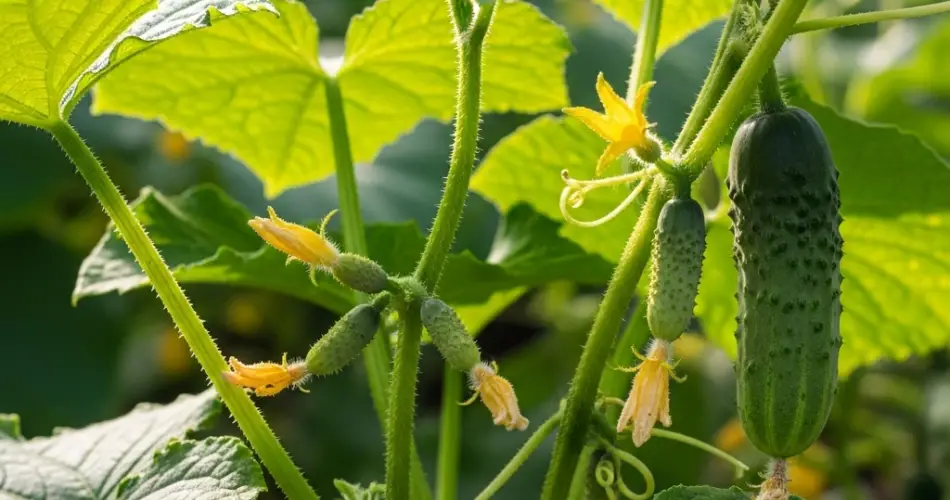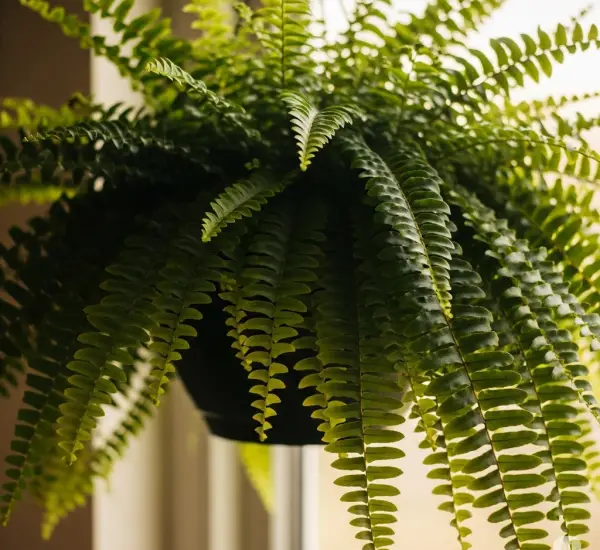If you’ve ever sliced into a fresh cucumber and thought, “Can I grow more from this?”—the answer is yes! While you can’t regrow a whole plant from a cucumber slice, you can regrow cucumbers from the seeds found inside ripe cucumbers. This method is simple, cost-effective, and a fun way to turn your kitchen scraps into thriving plants. Even if you have limited gardening experience or space, regrowing cucumbers from scraps is absolutely doable on a balcony, patio, or sunny windowsill. Here’s a complete guide to help you get started.
Step 1: Select the Right Cucumber
For seed regrowth, you need a mature cucumber—preferably one that is fully ripened, which means it’s likely to be larger, yellower, and more seeded than the ones sold for fresh eating. Many cucumbers in supermarkets are picked while still immature and may have underdeveloped seeds, so it’s better to use an overripe cucumber if possible.
If you can, choose a cucumber from an heirloom or open-pollinated variety. Seeds from hybrid cucumbers might not grow true to the parent plant, and their germination rate may be lower.
Step 2: Extract and Clean the Seeds
Start by slicing open the cucumber and scooping out the seeds with a spoon. Place them in a bowl of water and gently stir. The pulp and lighter seeds will float while the viable seeds usually sink to the bottom.
Skim off the floating matter, including any non-viable seeds. Rinse the remaining seeds thoroughly under running water using a fine mesh strainer.
For best results, ferment the seeds slightly—this helps remove the gelatinous coating that can inhibit germination. Simply soak the seeds in a jar with a little water for 1–2 days, stirring occasionally. When a slight odor develops and a thin film appears on the surface, they’re ready. Rinse them again and spread them out on a paper towel to dry completely for a few days.
Step 3: Start Seeds Indoors
Once dry, the cucumber seeds are ready for planting. Fill small seedling trays or containers with a light seed-starting mix. Sow the seeds about half an inch (1.2 cm) deep and lightly water the soil.
Place the containers in a warm spot with plenty of sunlight or under a grow light. Cucumber seeds typically germinate within 5 to 10 days. Keep the soil consistently moist but not soggy.
Once the seedlings develop two true leaves and are about 3–4 inches (7–10 cm) tall, they are ready to be transplanted.
Step 4: Transplanting into Pots
Choose containers that are at least 10–12 inches (25–30 cm) deep and wide, as cucumbers have long roots and need space to grow. If you have vertical space, select bush or compact vining varieties and train them upward using trellises or stakes to save space.
Fill the container with a mix of potting soil and compost. Transplant your seedlings carefully to avoid disturbing the roots. Plant one seedling per medium-sized pot, or space multiple plants 12–15 inches (30–38 cm) apart in larger containers or grow bags.
Step 5: Provide Proper Care
Sunlight: Cucumbers need full sun—at least 6–8 hours per day. Place the pots in the sunniest area of your balcony or outdoor space.
Watering: Cucumbers love moisture, but overwatering can lead to root rot. Keep the soil consistently moist, especially during flowering and fruiting. Water at the base of the plant to prevent fungal diseases.
Feeding: Apply a balanced organic fertilizer every 2–3 weeks. Alternatively, you can feed with compost tea or fish emulsion to support healthy growth and fruit production.
Support: If growing a vining type, use a trellis, string, or cage to lift the plant off the ground and encourage better airflow, reduce disease risk, and make harvesting easier.
Step 6: Pollination and Fruiting
Cucumbers produce both male and female flowers. If pollinators are limited in your area, you can hand-pollinate using a small brush. Gently transfer pollen from the male flower (which has a thin stem) to the female flower (which has a tiny fruit behind it).
Once pollinated, cucumbers will begin forming and grow quickly. Be sure to harvest them regularly—overripe fruits left on the vine can slow further production.
Step 7: Harvest and Enjoy
Depending on the variety, cucumbers are ready to harvest within 50–70 days. Pick them while they’re still firm and green. If they start turning yellow or become too large, the seeds inside will toughen, and the texture may become bitter.
Frequent harvesting encourages the plant to produce more cucumbers. Store freshly picked cucumbers in the refrigerator and use them within a week for best flavor.
Final Thoughts
Regrowing cucumbers from kitchen scraps is an excellent way to reduce waste and enjoy homegrown produce. With a bit of care, a sunny spot, and regular maintenance, you can turn discarded cucumber seeds into a lush plant that rewards you with crisp, refreshing cucumbers all season long. Whether you’re new to gardening or a seasoned grower, this method offers a simple and satisfying way to reconnect with your food.



